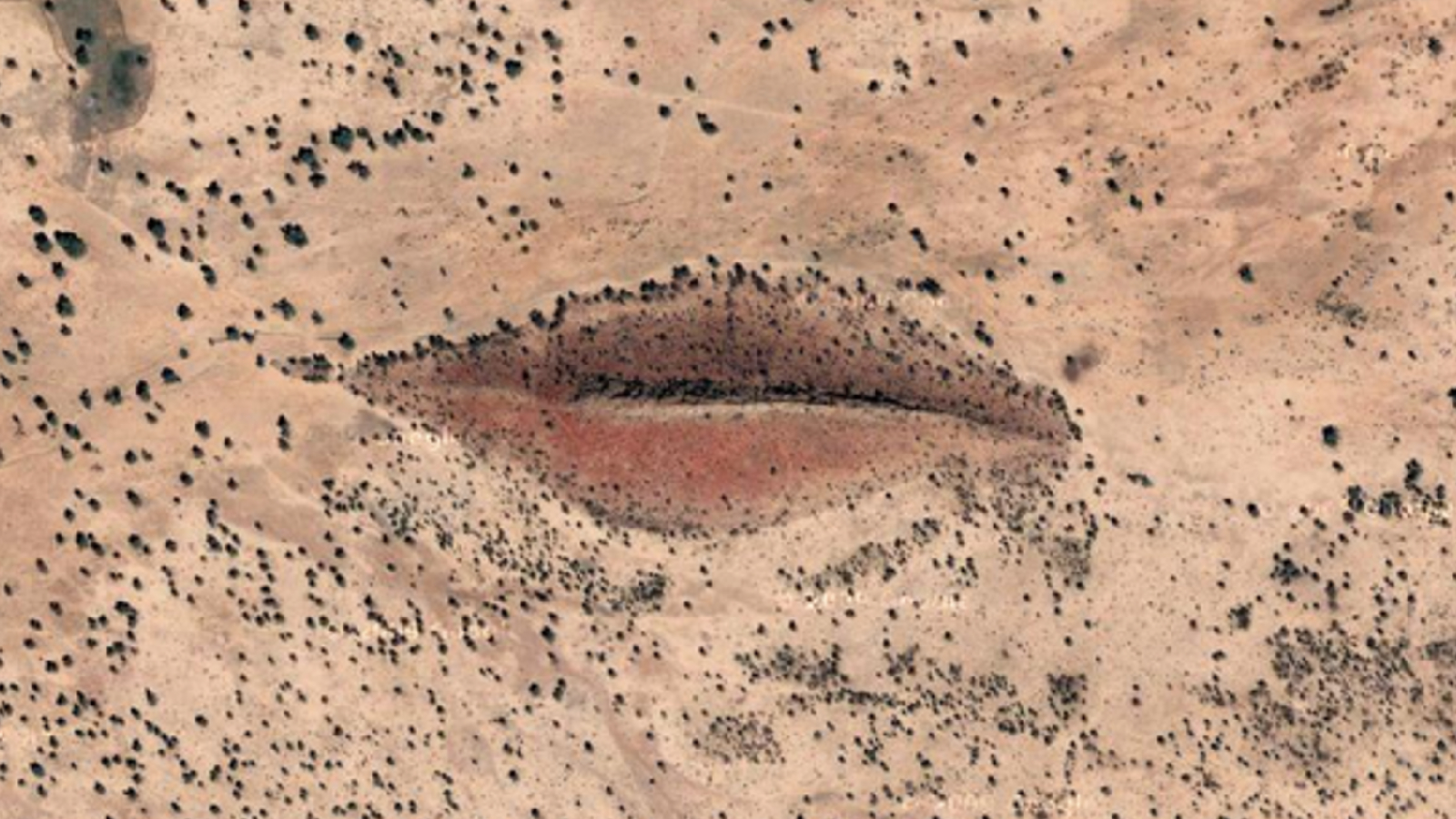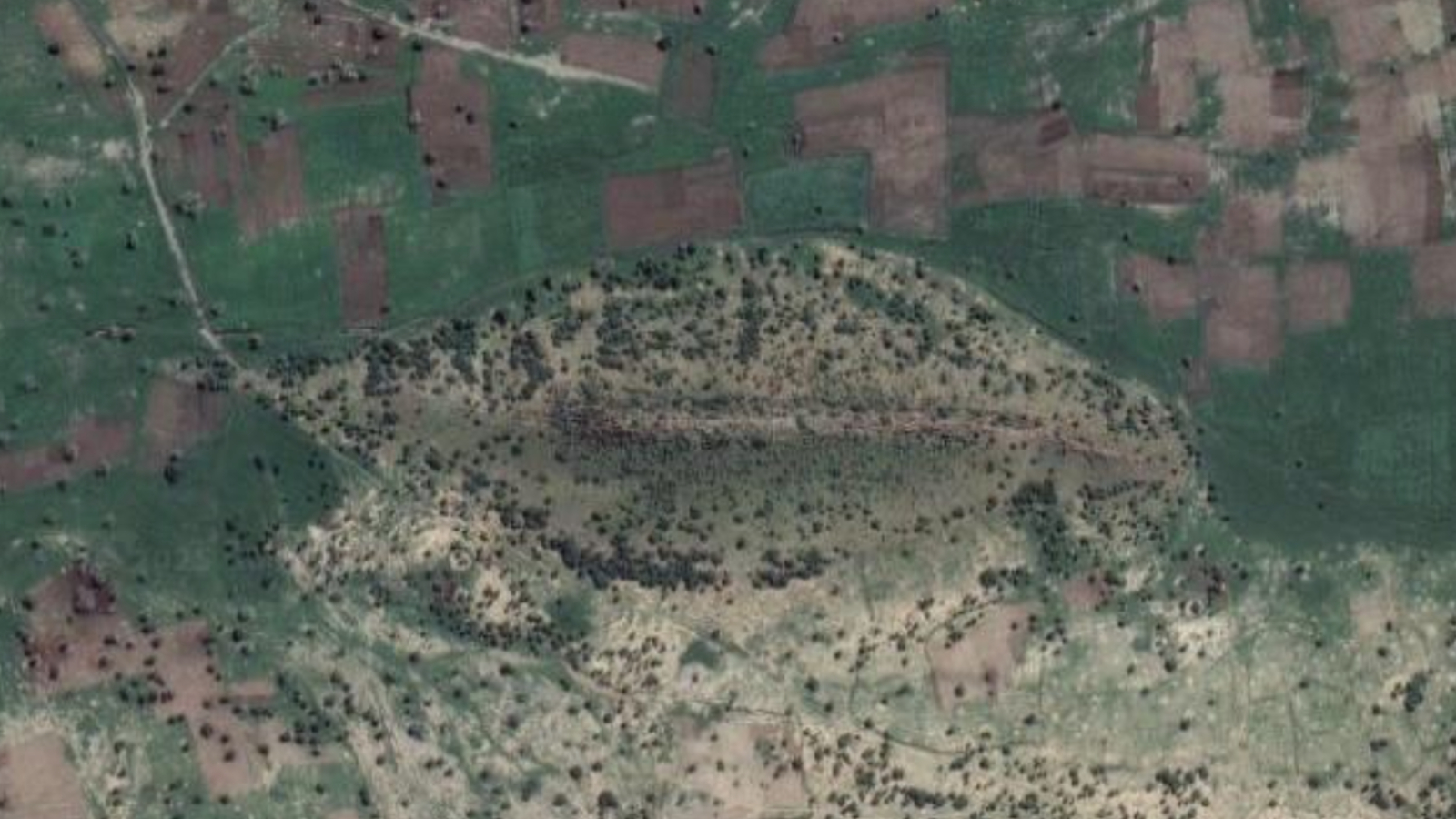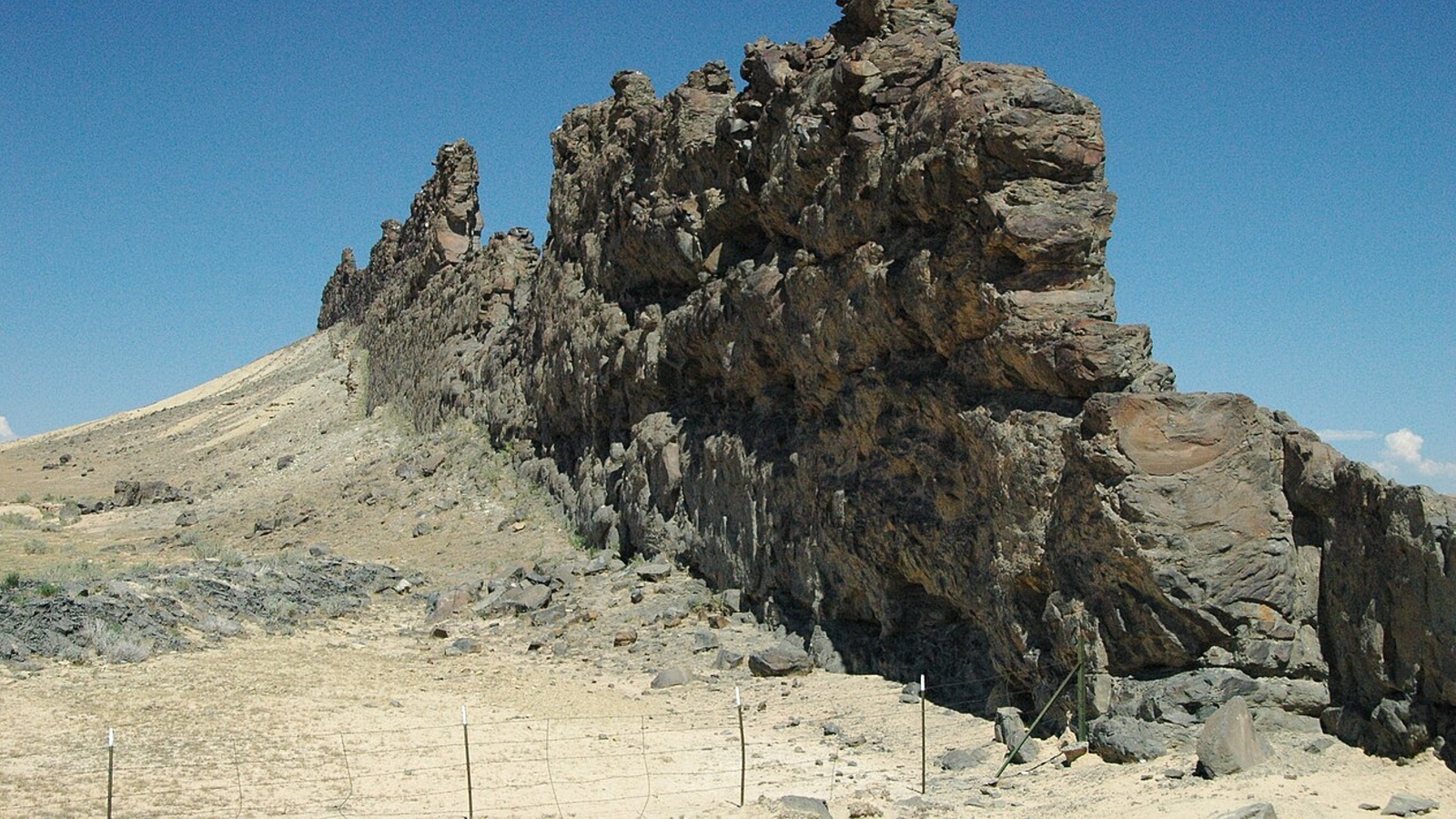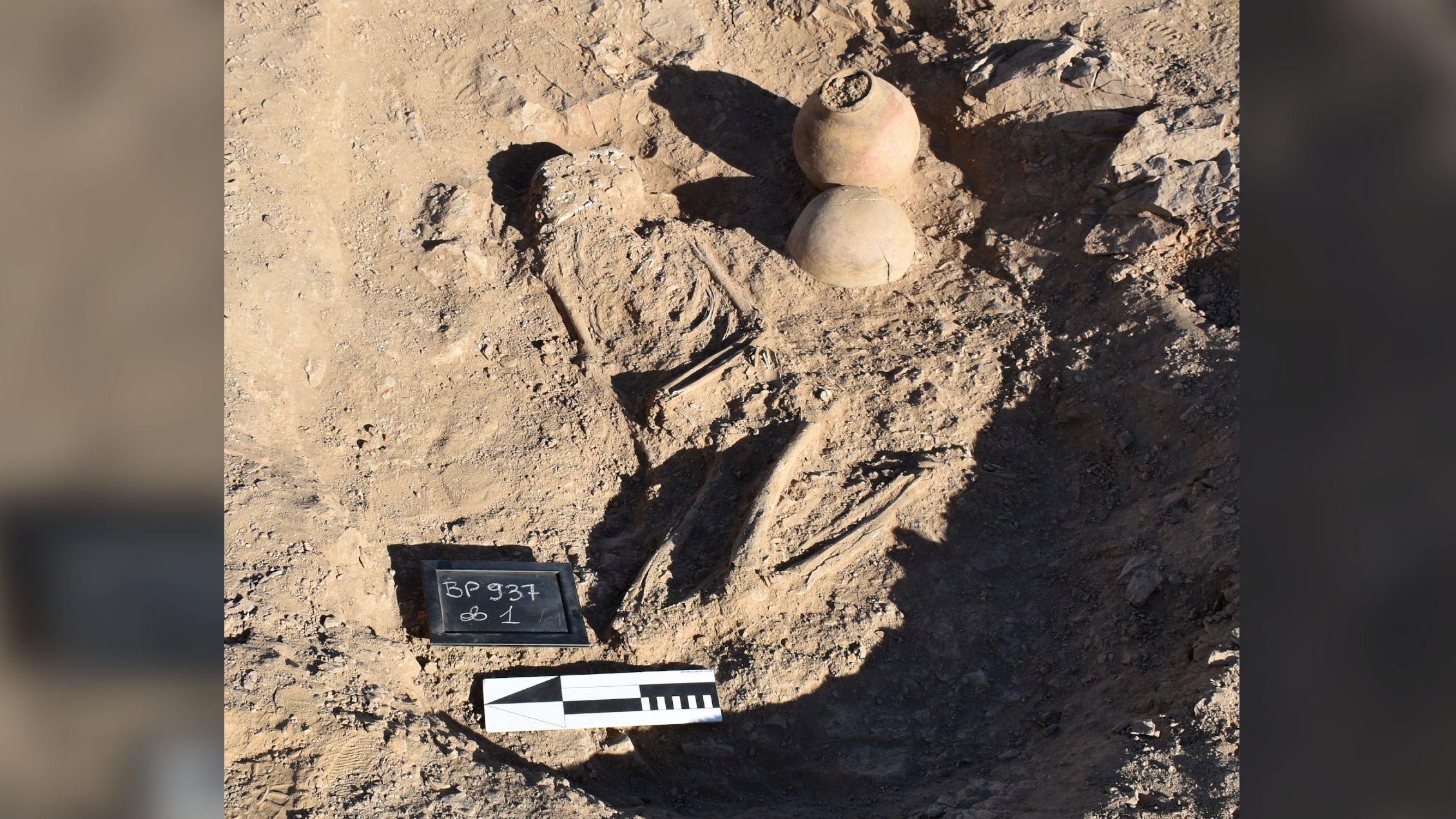The mysterious hill in Sudan that looks like 'landlocked lips' — Earth from space
A 2012 Google Earth photo captured a hill formation in Sudan that bears a striking resemblance to human lips. Not much is known about the unusual landmark, but researchers have guessed how it formed.

Where is it? West Darfur, Sudan [12.370771816, 23.322227802]
What's in the photo? A hill shaped like human lips
Where did the photo originate? Google Earth
When was it taken? 2012
This intriguing satellite photo, captured by Google Earth satellites in 2012, shows a strange hill formation in Sudan that bears a striking resemblance to pursed human lips blowing a kiss into space.
Not much is known about the bizarre structure, but experts told Live Science how it likely formed.
The striking hill, which is around 3,000 feet (900 meters) long and 1,200 feet (350 m) across at its widest point, is located in Sudan's West Darfur state, roughly 60 miles (95 km) east of the country's border with Chad.
The feature appears to be surrounded by agricultural fields and small black dots that are probably trees. In the 2012 photo, the surrounding ground has been dried out by drought, and the hill's slopes have a pinkish hue, accentuating its mouth-like look. But in more recent imagery, both the hill and its surroundings look green and are covered with significantly more vegetation (see below).
The hill's elevation and age are unknown. The structure does not have an official name, but it is labeled as "Landlocked lips" campground on Google Maps (although it is unclear if there is actually a campsite there).
Related: See all the best images of Earth from space

However, based on the available satellite imagery, experts do have a general idea of how the hill may have formed.
Get the world’s most fascinating discoveries delivered straight to your inbox.
"I see a narrow unit of exposed rock running down the middle of this feature," Josh Roering, a geomorphologist at the University of Oregon who specializes in landscape dynamics, told Live Science in an email. "It looks like there's a dike or narrow unit of resistant rock running through the middle of that ridgeline that erodes more slowly than the surrounding rock and thus sticks out."
Dikes are geological features that bisect larger horizontal sheets of rock, according to the European Geosciences Union. They are most commonly formed via volcanic activity or tectonic plate movements, but they can also emerge from sedimentary processes. However, it is unclear what type of dike this hill's central line may be.

"If correct, the shape and extent of that resistant rock unit thus sets the scale of the feature as the less resistant surrounding rock forms sloping terrain on either side," Roering said.
Similar structures can be found in the New Mexico desert and the Mackenzie dike swarm in Yukon, Canada.
However, without being able to study the formation up close, Roering said this is just "speculation."

Harry is a U.K.-based senior staff writer at Live Science. He studied marine biology at the University of Exeter before training to become a journalist. He covers a wide range of topics including space exploration, planetary science, space weather, climate change, animal behavior and paleontology. His recent work on the solar maximum won "best space submission" at the 2024 Aerospace Media Awards and was shortlisted in the "top scoop" category at the NCTJ Awards for Excellence in 2023. He also writes Live Science's weekly Earth from space series.
You must confirm your public display name before commenting
Please logout and then login again, you will then be prompted to enter your display name.
